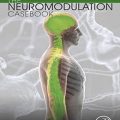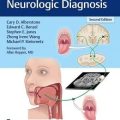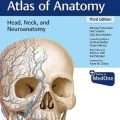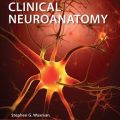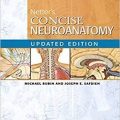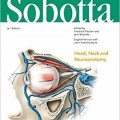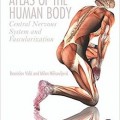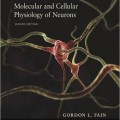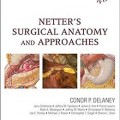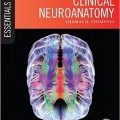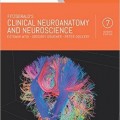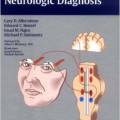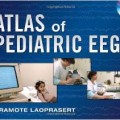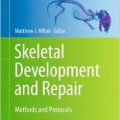دانلود کتاب اطلس مغز انسان (ویرایش ۲۰۱۶)
Atlas of the Human Brain, 4ed
The fourth edition of Atlas of the Human Brain presents the anatomy of the brain at macroscopic and microscopic levels, featuring different aspects of brain morphology and topography. This greatly enlarged new edition provides the most detailed and accurate delineations of brain structure available. It includes features which assist in the new fields of neuroscience – functional imaging, resting state imaging and tractography. Atlas of the Human Brain is an essential guide to those working with human brain imaging or attempting to relate their observations on experimental animals to humans. Totally new in this edition is the inclusion of Nissl plates with delineation of cortical areas (Brodmann’s areas), the first time that these areas have been presented in serial histological sections.
- The contents of the Atlas of the brain in MNI stereotaxic space has been extensively expanded from 143 pages, showing 69 levels through the hemisphere, to 314 pages representing 99 levels.
- In addition to the fiber-stained (myelin) plates, we now provide fifty new (Nissl) plates covering cytoarchitecture. These are interdigitated within the existing myelin plates of the stereotaxic atlas.
- All photographic plates now represent the complete hemisphere.
- All photographs of the cell- and fiber-stained sections have been transformed to fit the MNI-space.
- Major fiber tracts are identified in the fiber-stained sections.
- In the Nissl plates cortical delineations (Brodmann’s areas) are provided for the first time.
- The number of diagrams increased to 99. They were now generated from the 3D reconstruction of the hemisphere registered to the MNI- stereotaxic space. They can be used for immediate comparison between our atlas and experimental and clinical imaging results.
- Parts of cortical areas are displayed at high magnification on the facing page of full page Nissl sections. Images selected highlight those areas which are thought to correspond with those published by von Economo and Koskinas (1925).
- A novel way of depicting cortical areal pattern is used: The cortical cytoarchitectonic ribbon is unfolded and presented linearly. This linear representation of the cortex enables the comparison of different interpretations of cortecal areas and allows mapping of activation sites.
- Low magnification diagrams in the horizontal (axial) and sagittal planes are included, calculated from the 3D model of the atlas brain.
About the Author
The main research interests are (i) the structural and molecular anatomy of the mammalian brain, especially of the human brain and (ii) expression patterns and regulation of terminal carbohydrates in development, cell activation and disease (III) operation planning in stereotactic neurosurgery. He works on a “Digital Brain Atlas for Planning and Interindividual Registration of Targets in Deep Brain Stimulation” and on a “Spatial Information Management Resource for the Human Brain”. J. K. Mai has edited the catalogue of human brain sections from the Vogt collection; he is author and editor of several books, e.g. the awarded “Atlas of the Human Brain” with CD-ROM (Academic Press/Elsevier, San Diego), “The Human Nervous System” (Academic Press/Elsevier, San Diego, Amsterdam, 3rd ed. 2012), Funktionelle Anatomie für Zahnmediziner (Quintessenz, Berlin, 2nd. ed. 2008; Sensi Divini (ital., engl., ger, russ. eds). J. K. Mai is CEO of MR-X-Brain GmbH.Milan Majtanik received his diploma in neuropsychology and training in neuroinformatics from the University of Bochum. He completed his diploma in mathematics and his PhD in psychology at the University of Düsseldorf. In his research at the Research Center Jülich he combined advanced analysis techniques in magnetoencephalography (synchronization tomography) with computational modelling in order to measure the impact of desynchronizing sensory stimulation on brain functions. His work on neural plasticity and desynchronizing neural stimulation provided framework for the developent of novel therapeutic techniques. He is currently focusing on the development of novel algorithms for high precision mapping and analysis of individual MRI scans.Professor George Paxinos, AO (BA, MA, PhD, DSc) completed his BA at The University of California at Berkeley, his PhD at McGill University, and spent a postdoctoral year at Yale University. He is the author of almost 50 books on the structure of the brain of humans and experimental animals, including The Rat Brain in Stereotaxic Coordinates, now in its 7th Edition, which is ranked by Thomson ISI as one of the 50 most cited items in the Web of Science. Dr. Paxinos paved the way for future neuroscience research by being the first to produce a three-dimensional (stereotaxic) framework for placement of electrodes and injections in the brain of experimental animals, which is now used as an international standard. He was a member of the first International Consortium for Brain Mapping, a UCLA based consortium that received the top ranking and was funded by the NIMH led Human Brain Project. Dr. Paxinos has been honored with more than nine distinguished awards throughout his years of research, including: The Warner Brown Memorial Prize (University of California at Berkeley, 1968), The Walter Burfitt Prize (1992), The Award for Excellence in Publishing in Medical Science (Assoc Amer Publishers, 1999), The Ramaciotti Medal for Excellence in Biomedical Research (2001), The Alexander von Humbolt Foundation Prize (Germany 2004), and more.
Contents
Part 1: Three Atlases of the Brain in the Head
۱.۱ Materials and Methods
۱.۱.۱ Anatomical Preparations
۱.۱.۲ Magnetic Resonance Imaging (MRI)
۱.۱.۳ Preparation and Photography of the Anatomical Slices
۱.۱.۴ Preparation of 100 µm Thick Frozen Histological Brain Sections
۱.۱.۵ Presentation of the Images for the Atlases of the Brain in the Head
۱.۱.۶ References
۱.۲ Horizontal Atlas
۱.۳ Coronal Atlas
۱.۴ Sagittal Atlas
Part 2: Myelo- and Cytoarchitectonic Atlas of the Human Brain in Stereotaxic (MNI) Space
۲.۱ Materials and Methods
۲.۱.۱ The Brain
۲.۱.۲ Methods
۲.۱.۳ Earlier Histological, Morphometric, Immunohistochemical Studies
۲.۱.۴ Nomenclature
۲.۱.۵ Photographic Plates and Corresponding Diagrams
۲.۱.۶ Three-Dimensional Reconstructions
۲.۱.۷ Standardization
۲.۱.۸ Mapping of the Atlas Space to the Talairach Space
۲.۱.۹ Mapping of the Atlas Space to the MNI/ICBM2009b Template
۲.۱.۱۰ Atlas of the Human Brain (AHB) Reconstruction with MNI/ICBM2009b Shape Constrain
۲.۱.۱۱ Registration of the Histological Sections to the Reconstructed Volume
۲.۱.۱۲ Use of the Atlas for the Interpretation of Individual in vivo/in vitro Brains
۲.۱.۱۳ Mapping of the Cortex Areas
۲.۱.۱۴ Generation of the Linear Representation of Cortex „Stripes“
۲.۱.۱۵ Layout of the Myelo- and Cytoarchitectonic Atlas of the Human Brain in Stereotaxic (MNI) Space
۲.۱.۱۶ References
۲.۲ Surface Views
۲.۳ Plates, Figures and Diagrams
۲.۴ Diagrams with Reduced Detail
۲.۴.۱ Horizontal (axial) Diagrams
۲.۴.۲ Sagittal Diagrams
۲.۵ Maps of Subcortical Areas
۲.۵.۱ Thalamus
۲.۵.۲ Hypothalamus
۲.۶ Published Studies Referring to the Brain Represented in the Myelo- and Cytoarchitectonic
Atlas of the Human Brain in Stereotaxic (MNI) Space
۲.۶.۱ Histological, Morphometric and Histochemical Studies
۲.۶.۲ References
لینک کوتاه : https://bookbaz.ir/?p=34757
نویسنده : Juergen K. Mai , Milan Majtanik
ناشر : Academic Press; 4 edition
سال انتشار : 2016
زبان کتاب : انگلیسی
نوع فایل : PDF
تعداد صفحات : 458
(ISBN) شابک : 0128028009
قیمت کتاب درآمازون : $215.35
حجم فایل : 200 MB

















